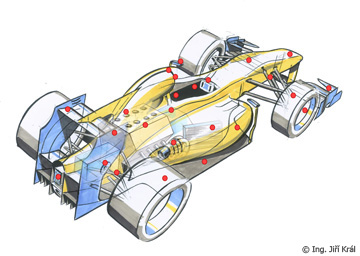DTM highlight at the Norisring: Hankook race tyres generate plenty of traction on the only street circuit in Germany
Anna Pasternak/Hankook tire | 19.6.18 | Kalendář DTM
Hankook 2018
DTM highlight at the Norisring: Hankook race tyres generate plenty of traction on the only street circuit in Germany
Premium tyre maker Hankook and the DTM are at the Norisring this weekend – the only street circuit in Germany, and a highlight on the calendar of what is probably the most popular international touring car series. At just 2.3 kilometres, the circuit in the heart of Nuremberg is not only the shortest of the nine DTM tracks, but is also popular with drivers and fans alike and is known as the “German Monaco” for its unique flair. The drivers must quickly get the Hankook race tyres up to the optimal temperature in races seven and eight of the season, in order to generate a lot of traction and be able to accelerate quickly out of the many narrow and winding sections of the Norisring.
Nuremberg/Germany, 19th June 2018
As it is every year, the asphalt, which is normally used by everyday traffic, will be a key aspect at the Norisring. The track surface is not the same throughout, but has been repaired and patched up many times and consists of various different types of asphalt. “The surface is dirty at the start of the race weekend, but the racing line is cleaned very quickly by the cars themselves. As the asphalt is generally smooth and sealed, there is no notable tyre wear, especially as the aerodynamic downforce generated by the cars has been reduced by a third. This means that the construction of the Ventus Race is put under less strain,” explains Hankook DTM race engineer Thomas Baltes.
Few other circuits ask more questions of the DTM cars’ brakes than the street circuit in Nuremberg. Fast straights are followed by tight corners and hairpins, for some of which the drivers must brake from 250 down to 60 km/h. The many bumps make it particularly difficult to hit braking points accurately. Thomas Baltes: “The teams can, to a certain extent, compensate for the uneven track surface by employing different air pressures in connection with the corresponding car set-up and camber. Good grip and a lot of traction are required in the many braking and acceleration manoeuvres on the smooth Norisring asphalt, in order to avoid skidding and to pace the tyre perfectly over the course of a stint.”
However, the braking and acceleration into and out of the circuit’s eight corners are not the only things that are extremely important. The drivers must find the right racing line, particularly on the exit from the “Schöller S”, in order to avoid hitting the wall and losing a wing mirror, as has happened so often in the past. It is not uncommon for drivers and fans at the street circuit in the heart of Nuremberg to experience dramatic changes in weather, with a hot and sunny day regularly followed by a wet race day. “You need a balanced set-up at the Norisring, but must also be flexible. If you achieve that, you can react to possible changes in the weather in the free practice session,” says Hankook DTM race engineer Thomas Baltes.”




